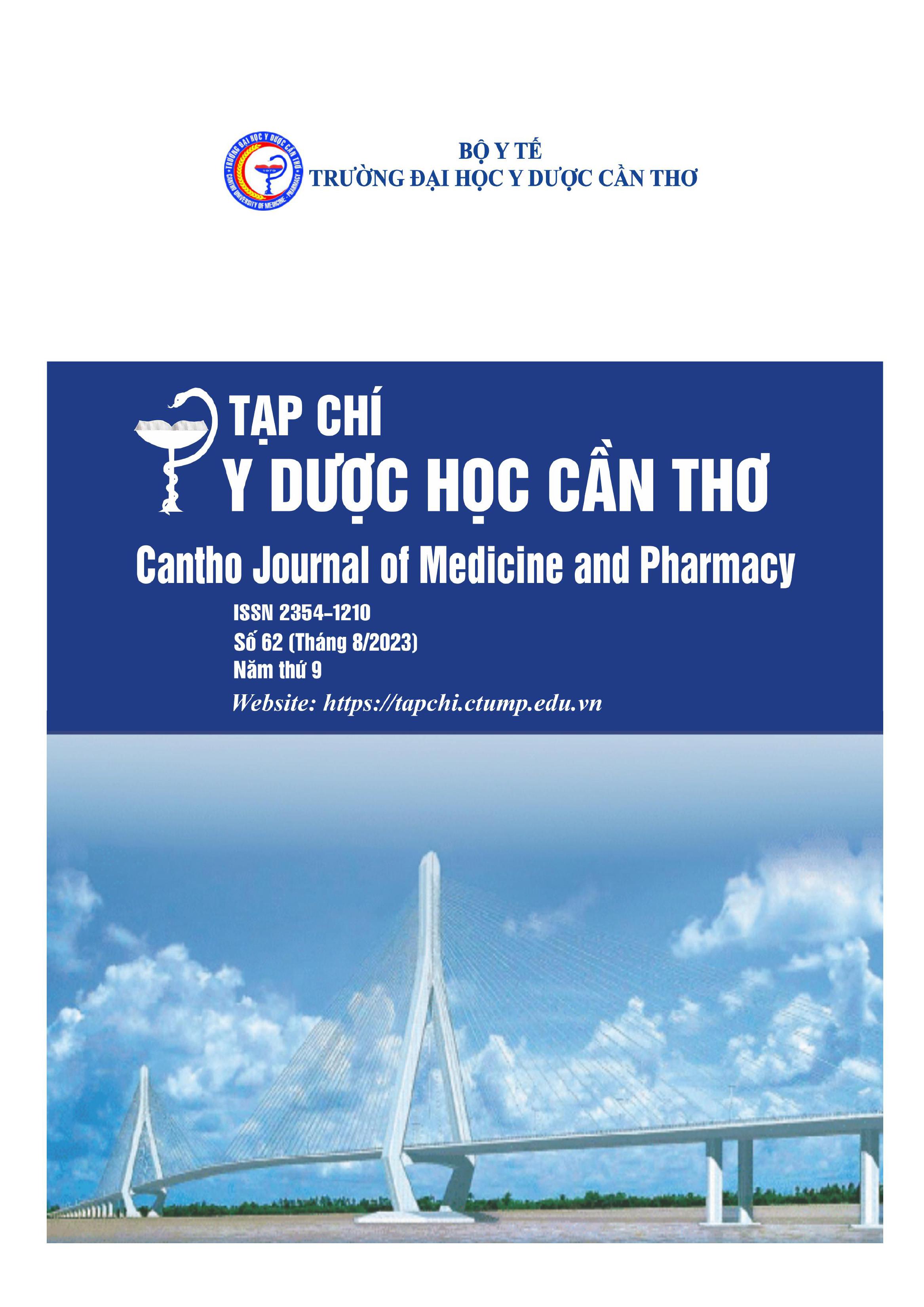PREPARATION AND BIOLOGICAL ACTIVITIES EVALUATION OF SYZYGIUM NERVOSUM LEAF EXTRACT
Main Article Content
Abstract
Background: The Syzygium nervosum leaves were widely used in folklore with many uses such as treating influenza, anti-inflammatory, antioxidant, and lowering blood sugar. Objective: Preparation of flavonoid-rich extracts from Syzygium nervosum leaves, then evaluating the antioxidant activity and α-glucosidase inhibitory effects of the extracts. Materials and methods: The Syzygium nervosum leaves were collected in Quang Binh, cleaned, dried, ground, and extracted by ultrasound-assisted method with the investigated parameters: solvent, temperature, extraction time, and powder-to-solvent ratios. The total flavonoid content was determined by colorimetric method using agents and measurement of optical absorbance by UV-Vis. The antioxidant activity was evaluated by the DPPH method. The α-glucosidase inhibitory activity was tested using the pNPG substrate method. Results: Flavonoid-rich Syzygium nervosum leaf extract was successfully prepared (51,95 mg RE/g leaf powder) by heating and stirring with 40% ethanol, 80 °C, 60 minutes, and powder-to-solvent ratio of 1/20 g/mL. The extract had antioxidant and α-glucosidase inhibitory activity with IC50 of 88,86 µg/mL and 338,55 µg/mL, respectively. Conclusion: The process for preparing extracts from Syzygium nervosum leaves with optimal flavonoid content was developed. The antioxidant and α-glucosidase inhibitory effects of the extract were evaluated, contributing to the direction of further studies on the Syzygium nervosum leaves in Vietnam.
Article Details
Keywords
Voi, Syzygium nervosum, flavonoid, antioxydant, α-glucosidase
References
2. Phạm Hoàng Hộ. Cây cỏ Việt Nam - Quyển II. Nhà xuất bản trẻ. 2003. 59.
3. Đỗ Tất Lợi. Những cây thuốc và vị thuốc Việt Nam. Nhà xuất bản y học. 2004. 423.
4. Song J.G., Su J.C., Song Q.Y., Huang R.L., Tang W., et al. Cleistocaltones A and B, antiviral phloroglucinol–terpenoid adducts from Cleistocalyx operculatus. Organic Letters. 2019. 21 (23), 9579-9583. https://doi.org/10.1021/acs.orglett.9b03743.
5. Truong Tuyet Mai, and Nguyen Van Chuyen. Anti-hyperglycemic activity of an aqueous extract from flower buds of Cleistocalyx operculatus (Roxb.) Merr and Perry. Bioscience, Biotechnology, and Biochemistry. 2007. 71(1), 69-76. https://doi.org/10.1271/bbb.60373.
6. Lu Y., Zhang Y.Y., Hu Y.C., and Lu Y.H. Protective effects of 2′, 4′-dihydroxy-6′-methoxy-3′, 5′-dimethylchalcone against hydrogen peroxide-induced oxidative stress in hepatic L02 cell. Archives of Pharmacal Research. 2014. 37, 1211-1218. https://doi.org/10.1007/s12272-0140334-4.
7. Ye C.L., Liu J.W., Wei D.Z., Lu Y.H., and Qian F. In vivo antitumor activity by 2′, 4′-dihydroxy6′-methoxy-3′, 5′-dimethylchalcone in a solid human carcinoma xenograft model. Cancer Chemotherapy and Pharmacology. 2005. 56 70-74. https://doi.org/10.1007/s00280-004-0975-y.
8. Shraim A.M., Ahmed T.A., Rahman M.M., and Hijji Y.M. Determination of total flavonoid content by aluminum chloride assay: A critical evaluation. LWT. 2021. 150, 111932. https://doi.org/10.1016/j.lwt.2021.111932.
9. Chanda S., and Dave R. In vitro models for antioxidant activity evaluation and some medicinal plants possessing antioxidant properties: An overview. African Journal of Microbiology Research. 2009. 3 (13), 981-996. https://doi.org/10.5897/AJMR.9000401.
10. Liu S., Yu Z., Zhu H., Zhang W., and Chen Y. In vitro α-glucosidase inhibitory activity of isolated fractions from water extract of Qingzhuan dark tea. BMC Complementary and Alternative Medicine. 2016. 16 (1), 1-8. https://doi.org/10.1186/s12906-016-1361-0.
11. Yuniarti R., Nadia S., Alamanda A., Zubir M., Syahputra R., et al. Characterization, phytochemical screenings and antioxidant activity test of kratom leaf ethanol extract (Mitragyna speciosa Korth) using DPPH method. Journal of Physics: Conference Series. 2020. 1462 (1), 012026. 10.1088/1742-6596/1462/1/012026.
12. Nguyễn Khánh Thùy Linh, và Nguyễn Thị Ngọc Trâm. Xây dựng phương pháp định lượng flavonoid toàn phần trong dịch chiết lá vối (Cleistocalyx Operculatus) bằng quang phổ UV-VIS. Tạp chí Y Dược học quân sự. 2022. 47 (4), 5-17.
13. Nguyen Phuong Thi Mai, Schultze N., Boger C., Alresley Z., Bolhuis A., et al. Anticaries and antimicrobial activities of methanolic extract from leaves of Cleistocalyx operculatus L. Asian Pacific Journal of Tropical Biomedicine. 2017. 7 (1), 43-48. https://doi.org/10.1016/j.apjtb.2016.11.009.
14. Manosroi J., Chankhampan C., Kumguan K., Manosroi W., and Manosroi A. In vitro anti-aging activities of extracts from leaves of Ma Kiang (Cleistocalyx nervosum var. paniala). Pharmaceutical Biology. 2015. 53 (6), 862-869. https://doi.org/10.3109/13880209.2014.946058.


